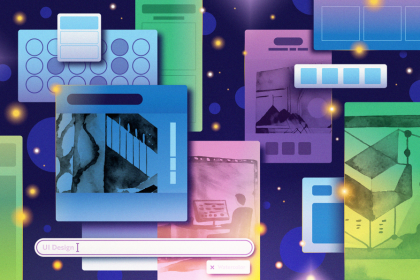In the tech world and beyond, new 5G applications are being discovered every day. From driverless cars to smarter cities, farms, and even shopping experiences, the latest standard in wireless networks is poised to transform the way we interact with information, devices and each other. What better time to take a closer look at how humans are putting 5G to use to transform their world. What is 5G? 5G (fifth-generation mobile technology) is the newest standard for cellular networks. Like its predecessors, 3G, 4G, and 4G LTE, 5G technology uses radio waves for data transmission. However, due to significant improvements in latency, throughput, and bandwidth, 5G is capable of much faster download and upload speeds than previous networks. How is 5G different from other wireless networks? Since its release in 2019, 5G broadband technology has been hailed as a breakthrough technology with big implications for both consumers and businesses. Primarily, this is due to its ability to handle large volumes of data generated by complex devices using its networks. As mobile technology has expanded over the years, the amount of data users generate every day has increased exponentially. Currently, other transformational technologies like artificial intelligence (AI), the Internet of Things (IoT), and machine learning (ML) require much faster speeds to function than 3G and 4G networks offer. Enter 5G, with its lightning-fast data transfer capabilities that allow newer technologies to function in the way they were designed to. Here are some of the biggest differences between 5G and previous wireless networks. Physical footprint: The transmitters used in 5G technology are smaller than in predecessors’ networks, allowing for discrete placement in out-of-the-way places. Furthermore, “cells”—geographical areas that all wireless networks require for connectivity—in 5G networks are smaller and require less power to run than in previous generations. Error rates: 5G’s adaptive Modulation and Coding Scheme (MCS), a schematic that WiFi devices use to transmit data, is more powerful than ones in 3G and 4G networks. This makes 5G’s Block Error Rate (BER)—a metric of error frequency—much lower. Bandwidth: By utilizing a broader spectrum of radio frequencies than previous wireless networks, 5G networks can transmit on a much wider range of bandwidths. This increases the number of devices they can support at any given time. Lower latency: 5G’s low latency, a measurement of the time it takes data to travel from one location to another, is a significant upgrade over previous generations. This means routine activities like downloading a file or working in the cloud is going to be much faster with a 5G connection than a connection on a different network. How does 5G work? Like all wireless networks, 5G networks are separated into geographical areas known as cells. Within each cell, wireless devices—such as smartphones, PCs, and IoT devices—connect to the internet via radio waves transmitted between an antenna and a base station. The technology that underpins 5G is essentially the same as in 3G and 4G networks, but due to its lower latency, 5G networks are capable of delivering much faster download speeds—in some cases as high as 10 gigabits per second (Gbps). As more and more devices are built for 5G speeds, demand for 5G connectivity is growing. Today, many popular Internet Service Providers (ISPs), such as Verizon, Google, and AT&T, offer 5G networks to homes and businesses. According to Statista, more than 200 million homes and businesses have already purchased it with that number expected to at least double by 2028 (link resides outside ibm.com). Let’s take a look at three areas of technological improvement that have made 5G so unique. New telecom specifications The 5G NR (New Radio) standard for cellular networks defines a new radio access technology (RAT) specification for all 5G mobile networks. The 5G rollout began in 2018 with a global initiative known as the 3rd Generation Partnership Project (3FPP) that defined a new set of standards to steer the design of devices and applications for use on 5G networks. The initiative was a success, and 5G networks began to grow swiftly in the ensuing years. Today, 45% of networks worldwide are 5G compatible, with that number forecasted to rise to 85% by the end of the decade according to a recent report by Ericsson (link resides outside ibm.com). Independent virtual networks (network slicing) On 5G networks, network operators can offer multiple independent virtual networks (in addition to public ones) on the same infrastructure. Unlike previous wireless networks, this new capability allows users to do more things remotely with greater security than ever before. For example, on a 5G network, enterprises can create use cases or business models and assign them their own independent virtual network, dramatically improving the user experience for their employees by adding greater customizability and security. Private networks In addition to network slicing, creating a 5G private network can also enhance personalization and security features over those available on previous generations of wireless networks. Global businesses seeking more control and mobility for their employees increasingly turn to private 5G network architectures rather than public networks they’ve used in the past. 5G use cases Now that we better understand how 5G technology works, let’s take a closer look at some of the exciting applications it’s enabling. Autonomous vehicles From taxi cabs to drones and beyond, 5G technology underpins most of the next-generation capabilities in autonomous vehicles. Until the 5G cellular standard came along, fully autonomous vehicles were a bit of a pipe dream due to the data transmission limitations of 3G and 4G technology. Now, 5G’s lightning-fast connection speeds have made transport systems for cars, trains and more much faster than previous generations, transforming the way systems and devices connect, communicate and collaborate. Smart factories 5G, along with AI and ML, is poised to help factories become not only smarter but more automated, efficient and resilient. Today, many mundane but necessary tasks associated with equipment repair and optimization are being turned over to machines thanks to 5G connectivity paired with AI and ML capabilities. This is one area where 5G is expected to be highly disruptive, impacting everything from fuel economy to the design of equipment lifecycles and how goods arrive at our homes. For example, on a busy factory floor, drones and cameras connected to smart devices utilizing the IoT can help locate and transport something more efficiently than in the past and prevent theft. Not only is this better for the environment and consumers, but it also frees up employees to dedicate their time and energy to tasks that are more suited to their skill sets. Smart cities The idea of a hyper-connected urban environment that uses 5G network speeds to spur innovation in areas like law enforcement, waste disposal and disaster mitigation is fast becoming a reality. Some cities already use 5G-enabled sensors to track traffic patterns in real time and adjust signals, helping guide the flow of traffic, minimize congestion and improve air quality. In another example, 5G power grids monitor supply and demand across heavily populated areas and deploy AI and ML applications to “learn” what times energy is in high or low demand. This process has been shown to significantly impact energy conservation and waste, potentially reducing carbon emissions and helping cities reach sustainability goals. Smart healthcare Hospitals, doctors and the healthcare industry as a whole already benefit from the speed and reliability of 5G networks every day. One example is the area of remote surgery that uses robotics and a high-definition live stream connected to the internet via a 5G network. Another is the field of mobile health, where 5G gives medical workers in the field quick access to patient data and medical history, enabling them to make smarter decisions, faster, and potentially save lives. Lastly, as we saw during the pandemic, contact tracing and the mapping of outbreaks are critical to keeping populations safe. 5G’s ability to deliver of volumes of data swiftly and securely allows experts to make more informed decisions that have ramifications for everyone. Better employee experiences 5G paired with new technological capabilities won’t just result in the automation of employee tasks, it will dramatically improve them and the overall employee experience. Take virtual reality (VR) and augmented reality (AR), for example. VR (digital environments that shut out the real world) and AR (digital content that augments the real world) are already used by stockroom employees, transportation drivers and many others. These employees rely…
Source link






















